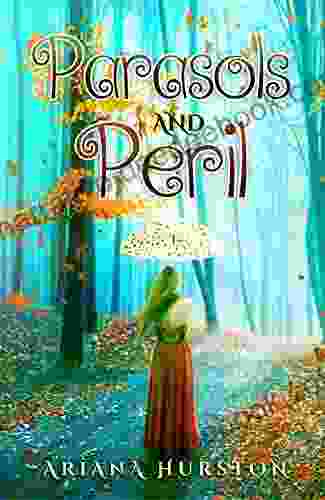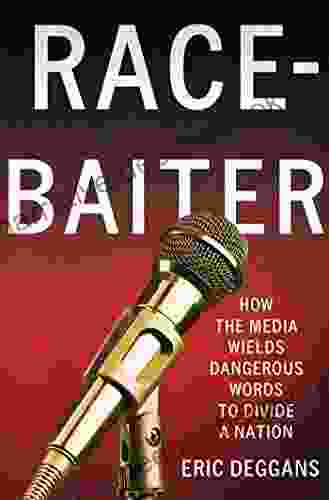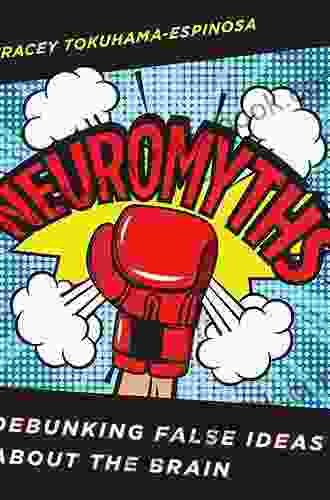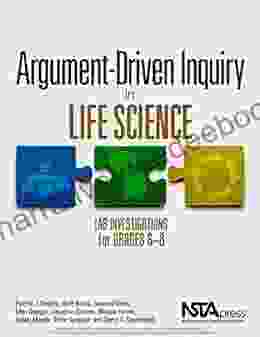Neuromyths Debunked: Unraveling Falsehoods About the Brain

This article aims to debunk some of the most common neuromyths, shedding light on the scientific evidence that contradicts them. By dispelling these falsehoods, we can foster a more accurate understanding of the brain and its remarkable capabilities.
Myth 1: We Only Use 10% of Our Brains
This neuromyth, often repeated in popular culture, suggests that humans only utilize a small fraction of their brain capacity, leaving 90% dormant and untapped. However, neuroimaging studies consistently show that all areas of the brain are active, even during simple tasks. Functional Magnetic Resonance Imaging (fMRI) and electroencephalography (EEG) reveal that the brain is a highly interconnected organ, with different regions working in concert to process information, make decisions, and control bodily functions.
4.5 out of 5
| Language | : | English |
| File size | : | 10015 KB |
| Text-to-Speech | : | Enabled |
| Screen Reader | : | Supported |
| Enhanced typesetting | : | Enabled |
| Word Wise | : | Enabled |
| Print length | : | 311 pages |
Debunking this myth has significant implications for education and learning. It emphasizes the potential for cognitive growth and neuroplasticity, the brain's ability to adapt and change throughout life. Rather than focusing on a fixed "brain capacity," educators can foster learning environments that stimulate multiple brain areas, encouraging neural connections and enhancing cognitive abilities.
Myth 2: Listening to Mozart Makes You Smarter
The "Mozart Effect" is a neuromyth that gained popularity in the 1990s, suggesting that listening to the music of Wolfgang Amadeus Mozart could improve spatial-temporal reasoning abilities, particularly in young children. However, subsequent studies have failed to replicate these findings consistently. While music can have beneficial effects on mood and relaxation, there is no scientific evidence to support the notion that it can significantly enhance intelligence or cognitive function.
Debunking this myth highlights the importance of evidence-based decision-making in education and parenting. It encourages educators and parents to focus on holistic approaches to cognitive development, such as providing enriching learning experiences, promoting critical thinking skills, and supporting emotional well-being, rather than relying on passive listening to classical music.
Myth 3: The Left Brain is Logical, the Right Brain is Creative
The left-brain/right-brain theory is a popular neuromyth that divides the brain into two distinct hemispheres, each with specialized functions. According to this theory, the left brain is responsible for logical thinking, language, and mathematics, while the right brain is associated with creativity, intuition, and emotions. While it is true that different brain hemispheres have some specialized functions, such as language processing in the left hemisphere and spatial processing in the right hemisphere, the brain is a highly integrated organ, and most cognitive functions involve both hemispheres working together.
Debunking this myth has implications for educational approaches that emphasize "brain-based learning" strategies. By understanding that cognitive processes are not solely confined to one hemisphere, educators can design more comprehensive and engaging learning experiences that cater to diverse learning styles and capitalize on the interplay between different brain regions.
Myth 4: Stress Kills Brain Cells
Stress is a natural part of life, and while prolonged exposure to chronic stress can negatively impact brain health, moderate levels of stress do not lead to widespread neuronal death. The brain is equipped with resilience mechanisms, including neuroprotective factors and the ability to generate new neurons (neurogenesis) in certain brain regions. While managing stress is important for overall well-being, including brain health, it is crucial to avoid propagating the myth that stress irreversibly damages the brain.
Debunking this myth fosters a more balanced approach to stress management and mental health. Instead of perpetuating fear-based rhetoric, educators and mental health professionals can provide evidence-based strategies for stress reduction and coping mechanisms, empowering individuals to navigate stress without undue anxiety about potential brain damage.
Myth 5: Technology is Making Us Dumber
In the digital age, concerns have been raised about the potential negative effects of technology on the brain. Some argue that excessive screen time can impair attention, memory, and cognitive development, leading to a decline in overall intelligence. However, research suggests that the impact of technology on the brain is more nuanced than often portrayed. While certain patterns of technology use, such as passive consumption of social media, can have detrimental effects, active engagement with digital tools can enhance cognitive abilities and provide opportunities for learning and connection.
Debunking this myth is essential for promoting digital literacy and fostering a balanced approach to technology use. Educators and parents can guide individuals towards responsible and enriching digital experiences while mitigating potential risks, ensuring that technology becomes a tool for cognitive growth rather than a threat to brain health.
Neuromyths are pervasive misconceptions that can distort our understanding of the brain and its capabilities. By debunking these myths, we can promote a more accurate and evidence-based view of neuroscience, informing educational practices, policy decisions, and public discourse.
Neuroscience has made tremendous strides in recent years, providing us with a wealth of knowledge about the intricate workings of the brain. Dispelling neuromyths allows us to embrace the complexities and wonders of the human brain, empowering us to make informed choices that support its health and potential throughout life.
As we continue to explore the frontiers of neuroscience, it is crucial to maintain a critical stance, embracing scientific evidence and challenging persistent myths and misconceptions. By fostering a culture of evidence-based thinking about the brain, we can unlock its true potential and harness its remarkable abilities to improve our lives and advance our understanding of the human experience.
4.5 out of 5
| Language | : | English |
| File size | : | 10015 KB |
| Text-to-Speech | : | Enabled |
| Screen Reader | : | Supported |
| Enhanced typesetting | : | Enabled |
| Word Wise | : | Enabled |
| Print length | : | 311 pages |
Do you want to contribute by writing guest posts on this blog?
Please contact us and send us a resume of previous articles that you have written.
 Book
Book Novel
Novel Page
Page Text
Text Genre
Genre Reader
Reader Library
Library Paperback
Paperback Magazine
Magazine Newspaper
Newspaper Bookmark
Bookmark Shelf
Shelf Glossary
Glossary Manuscript
Manuscript Scroll
Scroll Codex
Codex Tome
Tome Classics
Classics Library card
Library card Narrative
Narrative Reference
Reference Encyclopedia
Encyclopedia Dictionary
Dictionary Thesaurus
Thesaurus Resolution
Resolution Librarian
Librarian Catalog
Catalog Stacks
Stacks Archives
Archives Study
Study Research
Research Lending
Lending Academic
Academic Special Collections
Special Collections Thesis
Thesis Awards
Awards Reading List
Reading List Book Club
Book Club Theory
Theory Textbooks
Textbooks Michael L Frizell
Michael L Frizell Gary Mottram
Gary Mottram Chris Van Dusen
Chris Van Dusen Joseph O Chapa
Joseph O Chapa Jennie Magiera
Jennie Magiera Elisabeth Pfeiffer
Elisabeth Pfeiffer Frederik Van Passel
Frederik Van Passel Frans Viljoen
Frans Viljoen Ken J Sousa
Ken J Sousa William Peter Blatty
William Peter Blatty James Bender
James Bender Paula Bourassa
Paula Bourassa Andrew J Pankratz
Andrew J Pankratz Tracey Tokuhama Espinosa
Tracey Tokuhama Espinosa Suzanne Adam
Suzanne Adam Michael Heney
Michael Heney Jane Kirkpatrick
Jane Kirkpatrick Robert Wrigley
Robert Wrigley Reyko Huang
Reyko Huang Katherine Hupp
Katherine Hupp
Light bulbAdvertise smarter! Our strategic ad space ensures maximum exposure. Reserve your spot today!

 Samuel Taylor ColeridgeEnglish for Kids: Toddler and Preschool for Children Brings Words and Images
Samuel Taylor ColeridgeEnglish for Kids: Toddler and Preschool for Children Brings Words and Images
 Camden MitchellThe Paper Man Gallagher Lawson: A Journey Through Identity, Loss, and Reality
Camden MitchellThe Paper Man Gallagher Lawson: A Journey Through Identity, Loss, and Reality
 Rodney ParkerYou Can Teach Yourself Blues Piano: A Comprehensive Guide for Aspiring Blues...
Rodney ParkerYou Can Teach Yourself Blues Piano: A Comprehensive Guide for Aspiring Blues... James HayesFollow ·11.5k
James HayesFollow ·11.5k Ervin BellFollow ·15.6k
Ervin BellFollow ·15.6k Hayden MitchellFollow ·6.1k
Hayden MitchellFollow ·6.1k Jared NelsonFollow ·5.9k
Jared NelsonFollow ·5.9k Louis HayesFollow ·14.5k
Louis HayesFollow ·14.5k Douglas PowellFollow ·4.7k
Douglas PowellFollow ·4.7k Keith CoxFollow ·19.9k
Keith CoxFollow ·19.9k Rob FosterFollow ·6.6k
Rob FosterFollow ·6.6k

 Dallas Turner
Dallas TurnerParasols and Peril: Adventures in Grace
In the quaint town...

 Caleb Carter
Caleb CarterFlight Attendant Joe: A Dedicated Professional in the...
Flight Attendant Joe...

 Jerry Ward
Jerry WardPick Lottery The List For 23 States August 15 2024
The Pick Lottery is a multi-state lottery...

 Hudson Hayes
Hudson HayesHow the Media Wields Dangerous Words to Divide a Nation
In a world where the media is...

 Curtis Stewart
Curtis StewartThe Magic Mala: A Story That Changes Lives
In the realm of ancient traditions and...

 Raymond Parker
Raymond ParkerEarthly Meditations: A Poetic Tapestry of Nature,...
In the realm of contemporary...
4.5 out of 5
| Language | : | English |
| File size | : | 10015 KB |
| Text-to-Speech | : | Enabled |
| Screen Reader | : | Supported |
| Enhanced typesetting | : | Enabled |
| Word Wise | : | Enabled |
| Print length | : | 311 pages |





